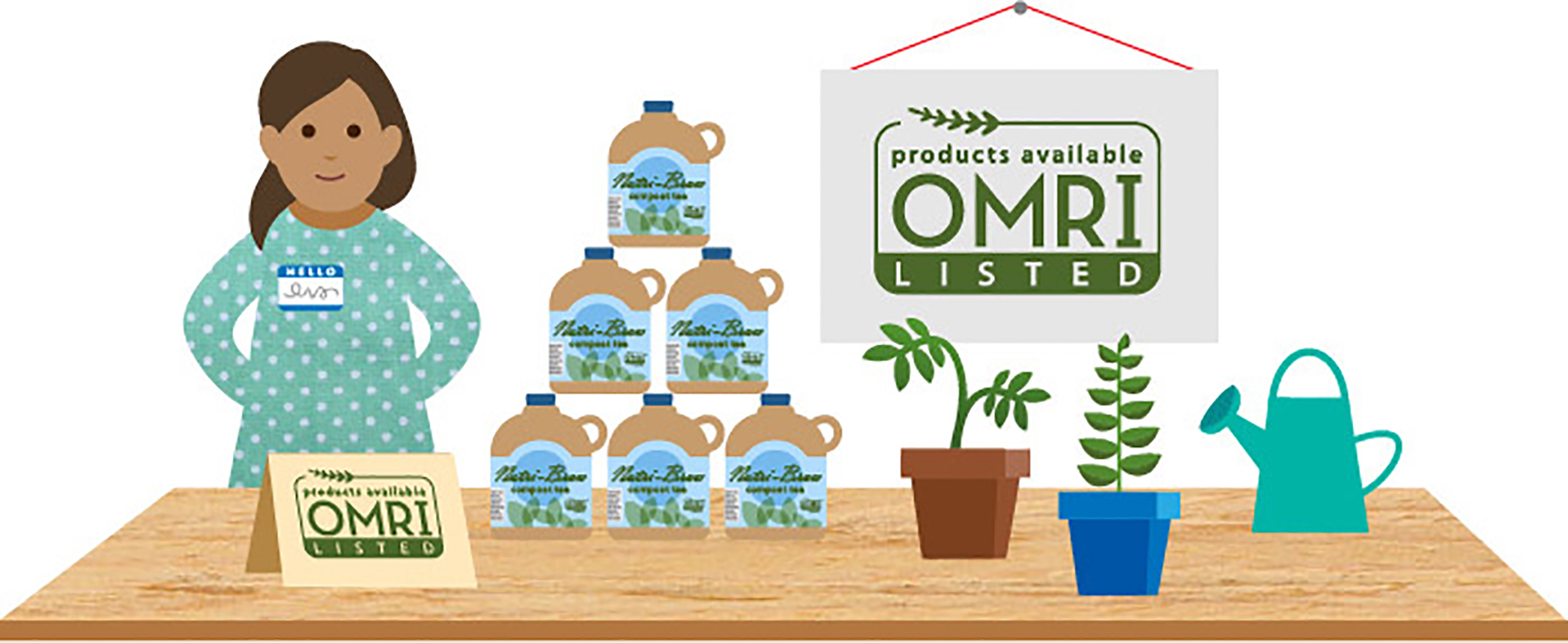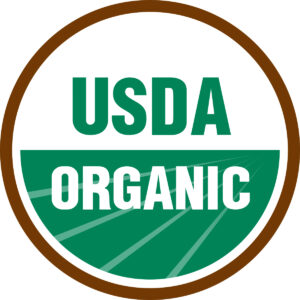3 Navigating the NOP regulations
The develops rules and regulations for the production, handling, labeling, and enforcement of all organic products. With some exceptions, any food or food product labeled “organic” must be certified organic by the .[1]
The regulations for the NOP are found in Title 7 (Agriculture) of the CFR in Part 205 of Chapter I (Agricultural Marketing Service), Subchapter M. The regulations may also be cited as 7 CFR 205 et. seq. The NOP regulations are divided into subparts A through G, and include important items such as definitions, certification, and administrative requirements.
For instance, farmers and ranchers seeking organic certification must meet these requirements:
- Organic food must be produced without using conventional pesticides, petroleum-based fertilizers, sewage sludge-based fertilizers, herbicides, genetic engineering (biotechnology), antibiotics, growth hormones, or irradiation (§205.105).
- It is a land requirement to have no prohibited substances applied for 3 years preceding the harvest of a crop (§205.202).
- Animals raised on an organic operation must meet animal health and welfare standards, not be fed antibiotics or growth hormones, be fed 100-percent organic feed, and be provided access to the outdoors with at least 30% dry matter intake (DMI) from pasture during the year (§§205.236 – 240).
Veterinarians who work with organic and alternative farmers don’t need to fully understand all the NOP regulations. However, it is important to know where to find information, when needed. Each of the following subparts has been designed to help you explore and become more familiar with the NOP. This chapter is not meant to comprehensively go through all the NOP regulations, but it has pulled out some sections that veterinarians may find the most relevant to working with organic farmers. After reading about each subpart, click on the links provided to answer the interactive question(s), descriptively called “Look it up and learn”, within each section.
Subpart A – Definitions
Subpart A defines several terms included in the NOP regulations. For definitions of terms used in organic production, which may be helpful as you communicate with organic and alternative farmers and ranchers, visit §205.2 .
LOOK IT UP AND LEARN 1
Subpart B – Applicability
Subpart B includes information on which operations need to be certified and those that are exempt from certification, as well as use of the term “organic” and recordkeeping practices for certified and exempt operations. For instance, records need to be clearly understood during the inspection process and maintained for at least five years. Therefore, you can assist farmers by providing itemized invoices (ensuring all products used are listed) for every sale and service you provide. For more information on recordkeeping requirements of certified operations, visit §205.103 .
LOOK IT UP AND LEARN 2
Subpart C – Organic Production and Handling Requirements
Subpart C addresses requirements for the organic farm’s and standards for soil fertility, crop nutrients, and other crop-related practices. Several regulations in this subpart also address requirements for the origin of livestock, livestock feed and living conditions, as well as standards for health care, pest management, and pasture practices. One particular regulation veterinarians and farmers must abide by is that you must NOT “withhold medical treatment from a sick animal in an effort to preserve its organic status” (§205.238).
Another commonly discussed topic within this section is the Pasture Rule, a 2010 amendment that clarifies livestock feed and living conditions for ruminants. A full set of guidelines has been written for farmers to understand the Pasture Rule and can be found at Pasture for Organic Ruminant Livestock: Understanding and Implementing the NOP Pasture Rule (USDA). According to these guidelines, organic ruminant livestock must have free access to certified organic pasture for the entire grazing season. This period is specific to the farm’s geographic climate but must be at least 120 days. Due to weather, season, or climate, the grazing season may or may not be continuous. Other requirements include:
- Organic ruminants’ diets must contain at least 30% dry matter (on average) from certified organic pasture, during the grazing season. Dry matter intake (DMI) is the amount of feed an animal consumes per day on a moisture-free basis. The rest of its diet must also be certified organic, including hay, grain, and other agricultural feed products.
- Ruminants must have free access to the outdoors year-round outside the grazing season except under specific conditions (such as inclement weather) (§205.239(b)).
- During the finishing period, ruminant slaughter stock are exempt from the minimum 30 percent DMI requirement from grazing. The finishing period for ruminant slaughter stock cannot exceed one-fifth of the animal’s total life or 120 days, whichever is shorter (USDA Organic 101).
To help encourage farmers to be compliant with the Pasture Rule, download and print this helpful handout: Tip sheet for the National Organic Program’s (NOP) Pasture Rule.
For further requirements that may affect organic livestock you work with, visit:
- Origin of livestock (§205.236)
- Livestock feed (§205.237)
- Livestock health care practice standard (§205.238)
- Livestock living conditions (§205.239)
- Pasture practice standard (§205.240)
- Facility pest management practice standard (§205.271)
While pasture access is not required for organic poultry, outdoor access must be provided. However, temporary confinement may be allowed during certain circumstances. For instance, farmers with birds located near outbreaks of Highly Pathogenic Avian Influenza (HPAI) can work with their certifiers to determine appropriate steps of approval and living conditions. More information about organic poultry requirements can be found at Tipsheet: Organic Poultry Production for Meat and Eggs (ATTRA) and Confinement of Organic Poultry due to risk of Avian Influenza (USDA).
LOOK IT UP AND LEARN 3
LOOK IT UP AND LEARN 4
LOOK IT UP AND LEARN 5
Subpart G – Administrative
Subpart G contains administrative regulations surrounding evaluation criteria of allowed and prohibited substances for use on organic farms as well as requirements for State organic programs, fees, noncompliance procedures, and appeals processes. Most importantly, it includes the National List of Allowed and Prohibited Substances, which is something that veterinarians who work with organically produced animals need to be familiar with. In general, natural substances are allowed (unless specifically prohibited), synthetic substances are prohibited (unless specifically allowed), and some substances may only be used in specific situations or up to a maximum amount.
The NOSB meets twice a year to review items on the list and evaluate items that may be added or removed from the list. Every substance on the list undergoes a thorough “sunset review” by the NOSB every five years to confirm it continues to meet the program’s requirements. The NOSB makes recommendations to the Secretary of Agriculture through the NOP. If the substance is determined by the NOSB to continue to be allowed on the list, USDA may publish a Federal Register notice. On the other hand, if the substance is given a recommendation of removal from the list, the USDA may initiate rulemaking (which includes an opportunity for public comments). The certification agency then updates their farmers and ranchers when items are added or removed from the list. While the NOSB is critical in this process to initiate a particular recommendation to the NOP, the NOP has the final word in what they ultimately do with that recommendation. A library of recommendations, meeting minutes, and more information on the sunset review process can be found at NOSB Recommendations.
A non-profit agency, the Organic Materials Review Institute (OMRI), has developed a product review program and is considered to be the gold standard of approval. Suppliers of agricultural inputs can have their proprietary active and inert ingredients reviewed for compliance with NOP regulations. The seal can help farmers determine what is approved for use. It’s important to note that not all suppliers will pay to have the OMRI review and certify their products, but the materials may still be allowed. Certifiers typically review products on their own and are not required to follow OMRI’s decisions. It is essential for organic farmers and ranchers to always check with their certifier to verify if a specific brand name or formulation is approved for organic production.

For specific information on what substances are allowed and prohibited as well as how the National List is evaluated and amended, visit the following:
- The National List and Petitioned Substances Index
- Evaluation criteria for allowed and prohibited substances, methods, and ingredients (§205.600)
- Synthetic substances allowed for use in organic livestock production (§205.603)
- Non-synthetic substances prohibited for use in organic livestock production (§205.604)
- Amending the National List (§205.607)
To help you better understand which common substances are allowed and prohibited on organic farms, practice the activity below by using the resources found in the following handout: Guidance for treating organic and alternative livestock. Select each of the four drawers to choose commonly allowed substances in each drawer. After all drawers are completed, select the “Allowed Substances” bag to see a summary of allowed substances used in this activity.
More details on prevention and treatment practices of organic and alternative animals can be found in “Prevention and organic/alternative animal health” and “Treatments and practices for organic and alternative livestock”.
- One exception to this rule is that farms that make less than $5000 gross annual income do not have to be certified organic to label their products as organic. According to §205.101, these agricultural products must be unprocessed, practices need to follow the NOP requirements, and farmers are not allowed to use the USDA organic seal. Some farmers may find this exemption sufficient for their purposes while other businesses may choose to pursue certification for the broader marketing benefits and consumer appeal. ↵
United State Department of Agriculture’s National Organic Program
United States Department of Agriculture
Organic System Plan
Organic Materials Review Institute


